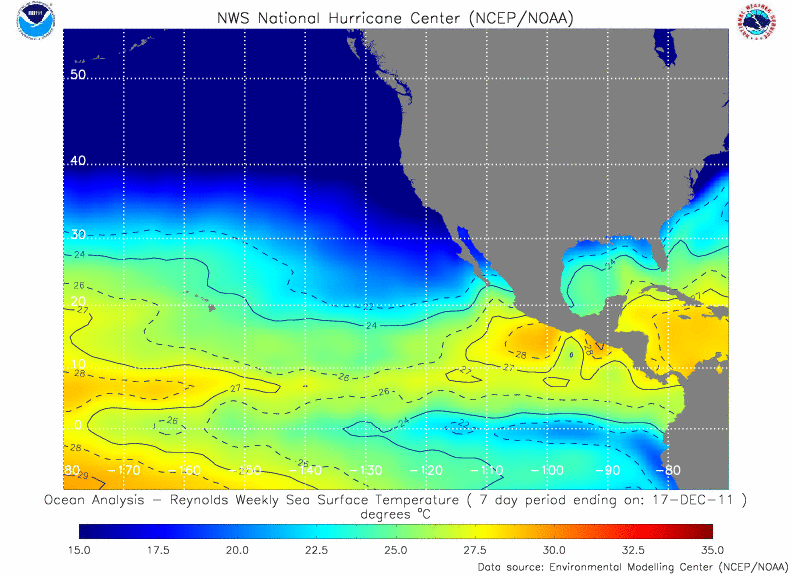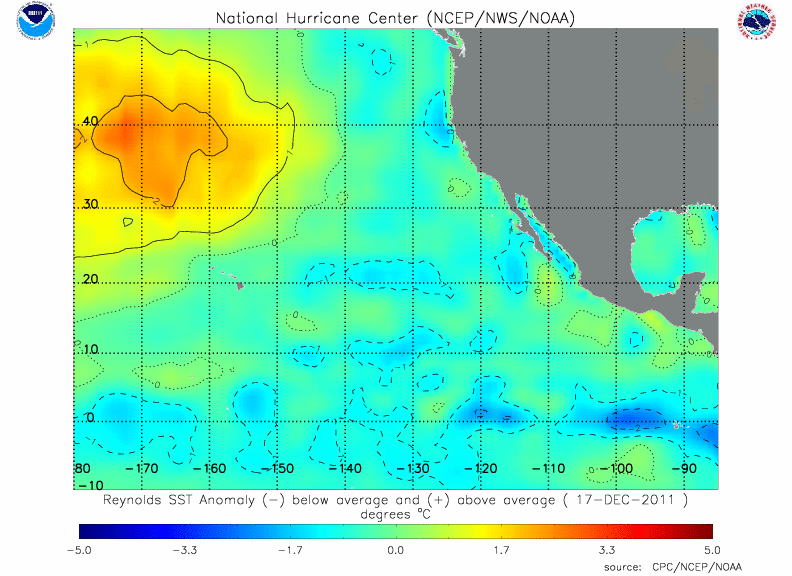From AgroClimate.
Date updated: July 6, 2009
The Pacific Ocean is currently transitioning into the El Niño phase.
 |
 |
| Current East Pacific SST Analysis | Current East Pacific SST Anomaly Analysis |
| Click on image for a full-size version. | |
Ocean temperatures in the past month have warmed rapidly in the eastern and central tropical Pacific Ocean and are now above the 0.5 C threshold that commonly designates El Niño conditions. This warming completes the transition from a weak La Niña in March of 2009 through several months of neutral conditions in April, May, and June, to impending El Niño for the remainder of 2009. El Niño refers to a periodic (every 2-7 years) of the tropical Pacific Ocean along the equator from the coast of South America to the central Pacific. Weakened trade winds over the central Pacific and abundant warm water beneath the surface indicate that surface temperatures will continue to warm in the next few months. Modeling centers around the world that predict El Niño/La Niña agree that waters will continue to warm and result in a weak to moderate El Niño over the next 3-6 months. NOAA's Climate Prediction Center issued an "El Niño watch" in early June, meaning that the development of El Niño conditions are likely in the next 1-3 months.
If El Niño fails to develop as forecast, then neutral conditions will be the other possibility. There is virtually no chance for a return to La Niña in 2009.
The development of El Niño could have dramatic impacts on the climate of the Southeast for the remainder of 2009. First, El Niño hinders hurricane development in the Atlantic basin and leads to less active seasons. El Niño events that develop this early in the summer can lead to drier than normal conditions across Alabama and Georgia in the late summer and early fall. El Niño has its strongest impacts on the Southeast in the colder months, bringing wet, stormy, and cool winter and spring seasons to the Southeast. For more detailed information on climate impacts in the Southeast, see the latest climate outlook.
The SECC tracks the temperatures of the Pacific Ocean using the JMA index. For more information and current JMA values, see the following link:
Other El Niño/La Niña Forecasts
Below are links to El Niño/La Niña forecasts from other centers in the U.S. and worldwide. Caution: the SECC may not agree with their forecasts and/or classification criteria.

